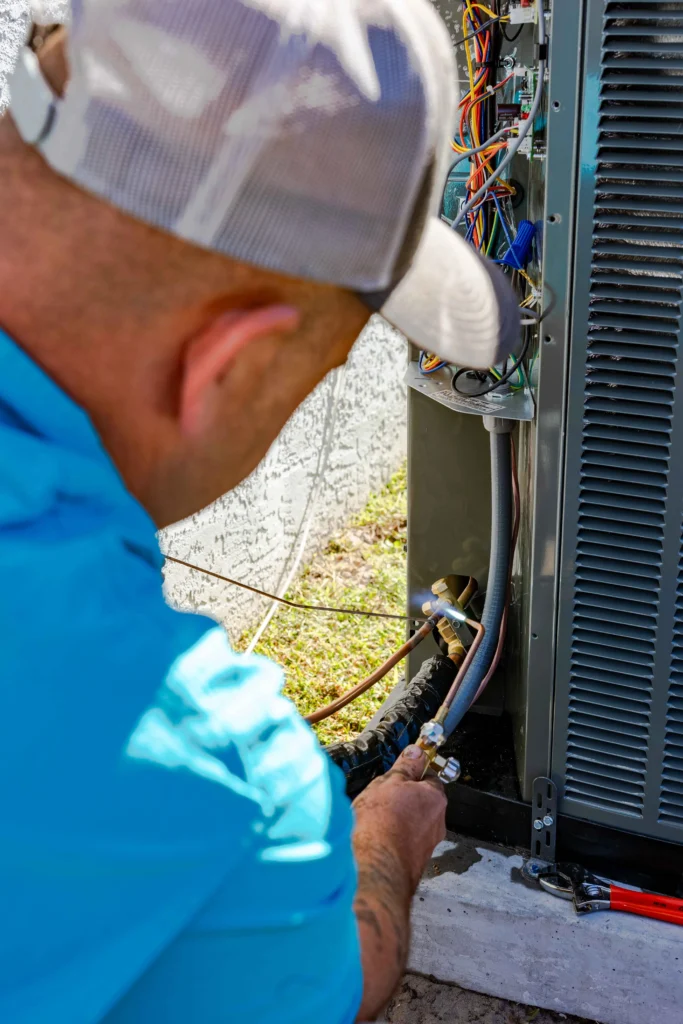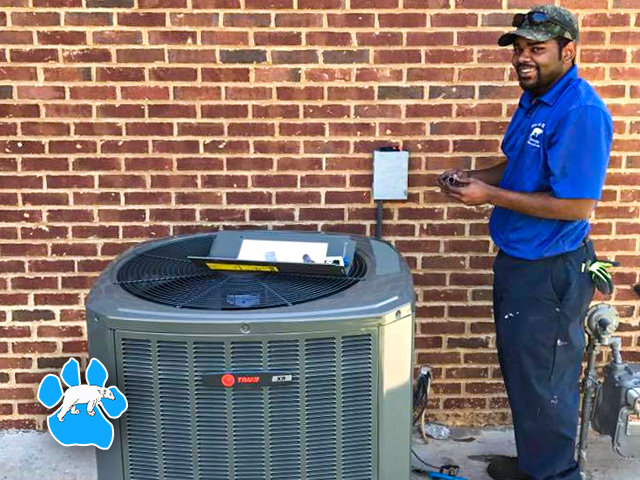Expert hvac solutions available near you.
Expert hvac solutions available near you.
Blog Article
Exactly How to Enhance Power Efficiency With Your HVAC System and Furnace Upgrades
As energy costs continue to rise, the significance of boosting power effectiveness with cooling and heating system and heating system upgrades can not be overstated. Assessing your present system's efficiency and taking into consideration energy-efficient options are necessary primary steps. Along with choosing versions with high SEER and AFUE scores, optimizing thermostat setups and enhancing insulation can significantly affect total effectiveness. However, the trip towards making best use of energy efficiency does not finish there; understanding the subtleties of normal maintenance and its long-term benefits is equally critical. What are the specific techniques that can bring about considerable savings and enhanced comfort?
Examine Your Current System
Prior to starting any upgrades, it is vital to assess your present a/c system and heater to recognize their efficiency and performance. This preliminary analysis offers a foundation for recognizing areas that need improvement and notifies choices about potential upgrades. Begin by analyzing the age of your cooling and heating system, as out-of-date models may lack modern energy-saving features.

Energy usage documents will likewise be crucial in assessing your system's operational prices. Consider performing an expert energy audit to obtain an expert evaluation of your system's efficiency.
Upgrade to Energy-Efficient Versions
Updating to energy-efficient models is a crucial action in boosting the overall efficiency of your a/c system and heater. These modern-day units are developed to take in much less power while delivering ideal cooling and heating, resulting in substantial expense financial savings on energy costs and a decreased environmental footprint.
When considering an upgrade, seek versions that have high Seasonal Energy Effectiveness Ratios (SEER) for air conditioning and Yearly Gas Use Efficiency (AFUE) rankings for heating systems. These ratings suggest the efficiency of the systems, with higher numbers mirroring better performance. Energy-efficient versions usually integrate advanced modern technologies, such as variable-speed electric motors and smart thermostats, which additionally improve power financial savings.
Furthermore, numerous energy-efficient HVAC systems are furnished with improved insulation and much better securing, which minimize energy loss and improve indoor convenience. furnace repair. While the initial financial investment may be higher, the long-term cost savings on energy costs and potential tax rewards for making use of energy-efficient devices can counter this expense substantially

Eventually, upgrading to energy-efficient models not only adds to a much more lasting future but also elevates the convenience and effectiveness of your home or business.
Optimize System Settings
To take full advantage of the efficiency of your heating and cooling system and heater, it is necessary to optimize read the full info here system settings tailored to your particular demands. Start by setting your thermostat to an energy-efficient temperature level. The U.S. Division of Energy suggests a winter months setting of 68 ° F when you are conscious and reducing it while you sleep or are away. In summer season, go for 78 ° F throughout the day.
Make use of programmable or smart thermostats that allow you to schedule temperature level adjustments automatically. This ensures your system runs just when necessary, minimizing energy intake. In addition, guarantee that your system is readied to run in the proper mode-- heating in winter months and air conditioning in summer-- while staying clear of the continuous follower alternative unless required for air blood circulation.
Frequently review and adjust setups based on seasonal modifications, tenancy patterns, and details convenience preferences. Also, make certain that vents and registers are unhampered, permitting optimum air flow. Lastly, take into consideration zoning systems that allow personalized comfort in different areas of your home, further improving performance. By fine-tuning these settings, you can attain significant energy cost savings while preserving a comfy living setting.
Improve Insulation and Sealing
A well-insulated home is vital to optimizing the performance of your HVAC system and heating system. Correct insulation decreases the workload on these systems, thus saving energy and lowering energy costs. Begin by examining your home's insulation in areas such as the attic, walls, and floors. Insulation products like fiberglass, foam, and cellulose can dramatically improve thermal resistance, aiding to keep conditioned air inside and outside air out.
Along with insulation, sealing spaces and cracks is important. Pay unique interest to home windows, doors, and any kind of penetrations in wall surfaces, such as electrical outlets and pipes components. Weatherstripping residential hvac company and caulking can efficiently seal these openings, protecting against drafts that jeopardize your HVAC effectiveness.
Moreover, ensure that ducts are appropriately protected and sealed. Dripping air ducts can result in significant power losses, reducing system performance. Utilizing mastic sealant or steel tape to secure air duct joints can improve airflow and efficiency.
Schedule Normal Maintenance
Normal maintenance of your heating and cooling system and heating system is crucial for making sure ideal performance and longevity. Arranged inspections and maintenance can recognize possible concerns before they rise, stopping expensive repairs and ineffectiveness. During maintenance, a qualified specialist will certainly cleanse and replace filters, check cooling agent degrees, inspect ductwork for leaks, and examine overall system operation. This positive technique not only boosts power efficiency but likewise extends the lifespan of your equipment.
It is recommended to arrange upkeep a minimum of twice a year-- as soon as in the spring for the cooling system and as soon as in the fall for the heating unit. furnace repair. Normal maintenance helps maintain regular interior temperatures, making certain convenience throughout the year. In addition, a well-maintained system operates extra effectively, which can lead to noticeable decreases in energy costs
Neglecting maintenance can result in decreased efficiency, boosted wear and tear, and inevitably, system failure. By focusing on normal service, home owners can stay clear of unanticipated failures and ensure their heating and cooling system and heater run at peak performance. Spending in upkeep is a vital action in improving energy performance and producing an extra lasting home atmosphere.
Conclusion
Finally, improving power efficiency within heating and cooling systems and heater upgrades is vital for reducing energy usage and improving total convenience. A methodical technique that includes examining the present system, spending in energy-efficient versions, enhancing setups, boosting insulation, and scheduling routine upkeep can cause substantial benefits. Executing these strategies not only lowers power expenses yet additionally adds to a more lasting setting, making it important for property owners to anchor focus on these upgrades.
Report this page